April 23 – May 11, 2024
Opening reception: Tuesday, April 23, 5:00 – 6:30 p.m.
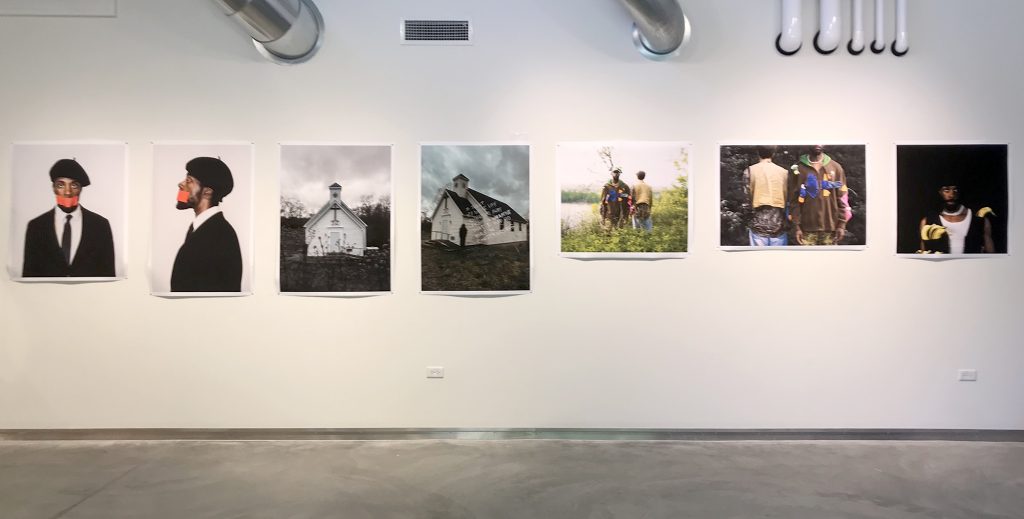
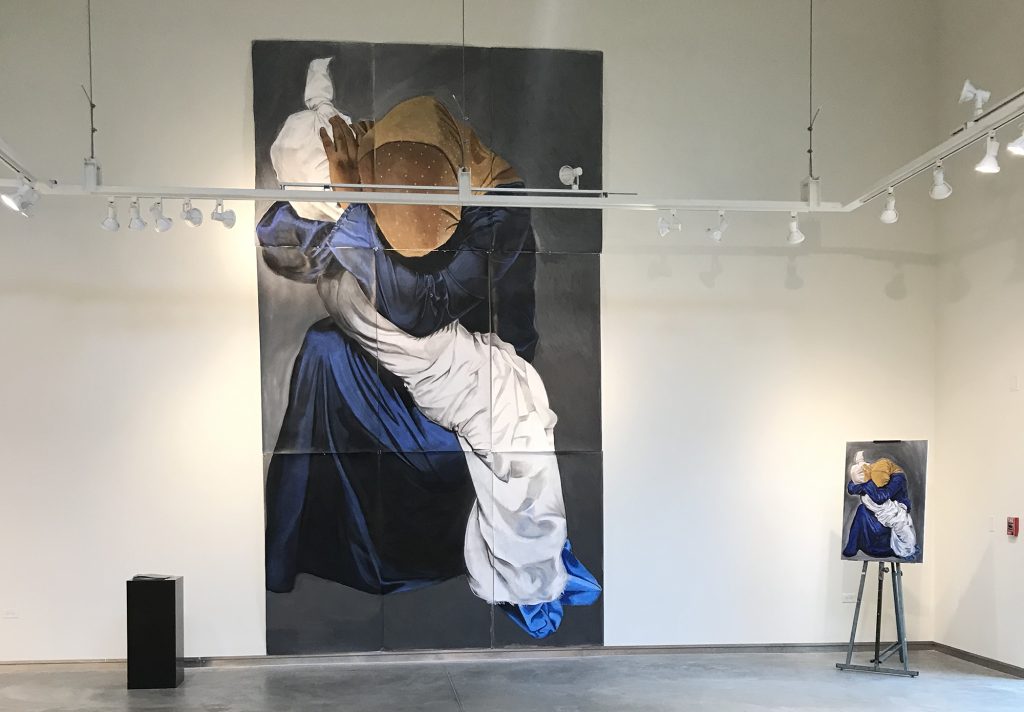
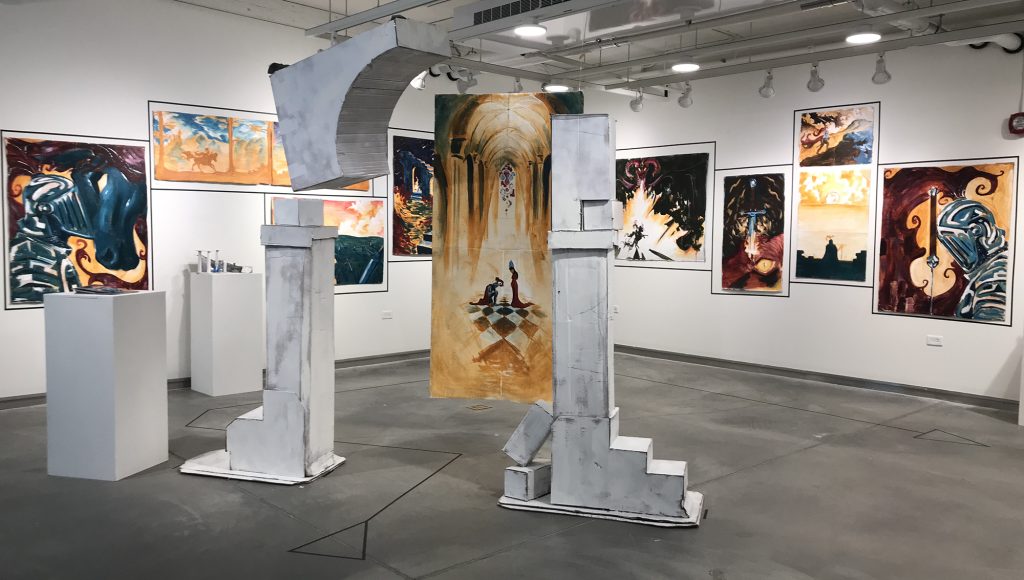
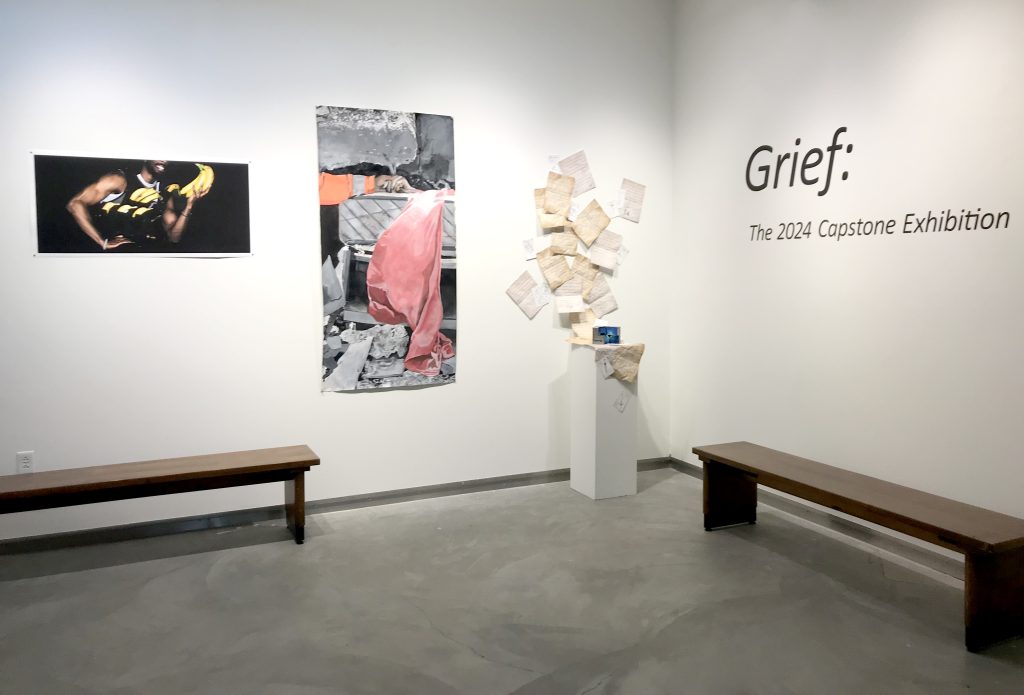
at Principia College
Opening reception: Tuesday, April 23, 5:00 – 6:30 p.m.




April 9 – 18, 2024
Opening reception: Tuesday, April 9, 5:00 – 6:30 p.m.
Juror: artist and art professor Eric Shultis
Juror’s talk: Tuesday, April 9, 5:30 p.m.
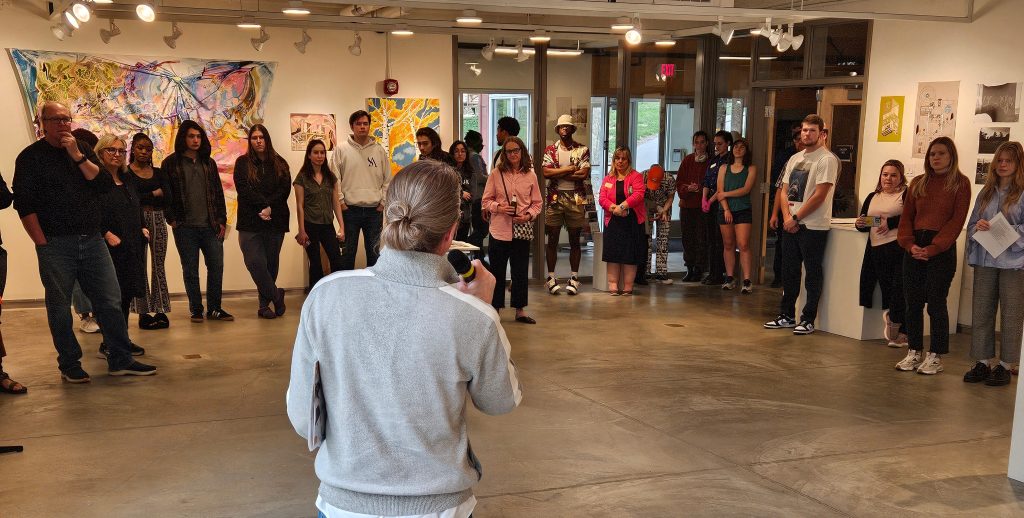
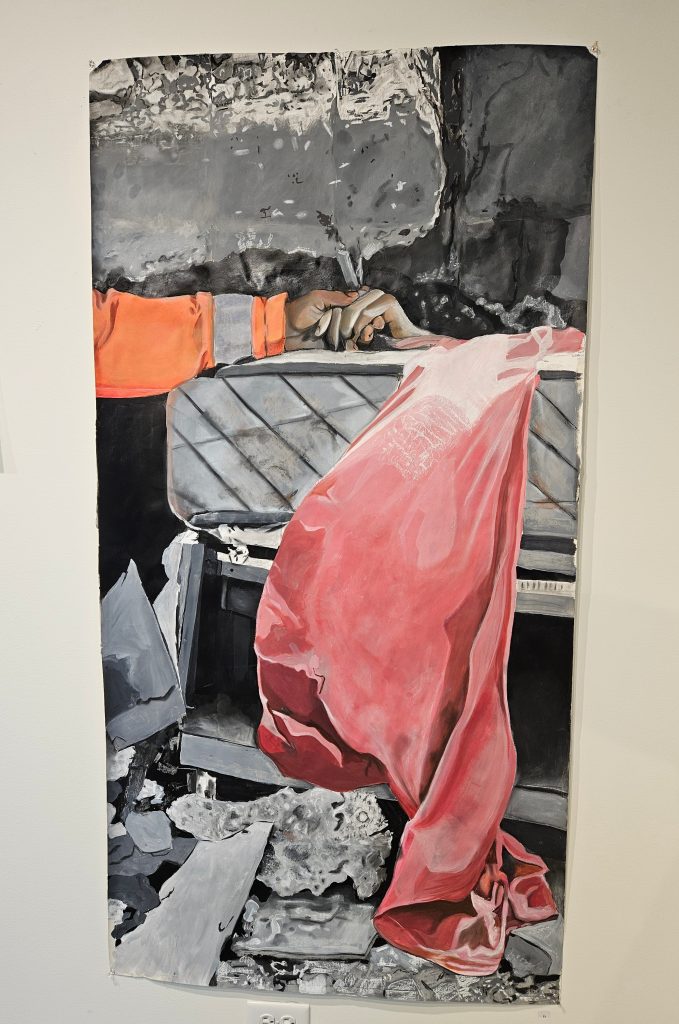
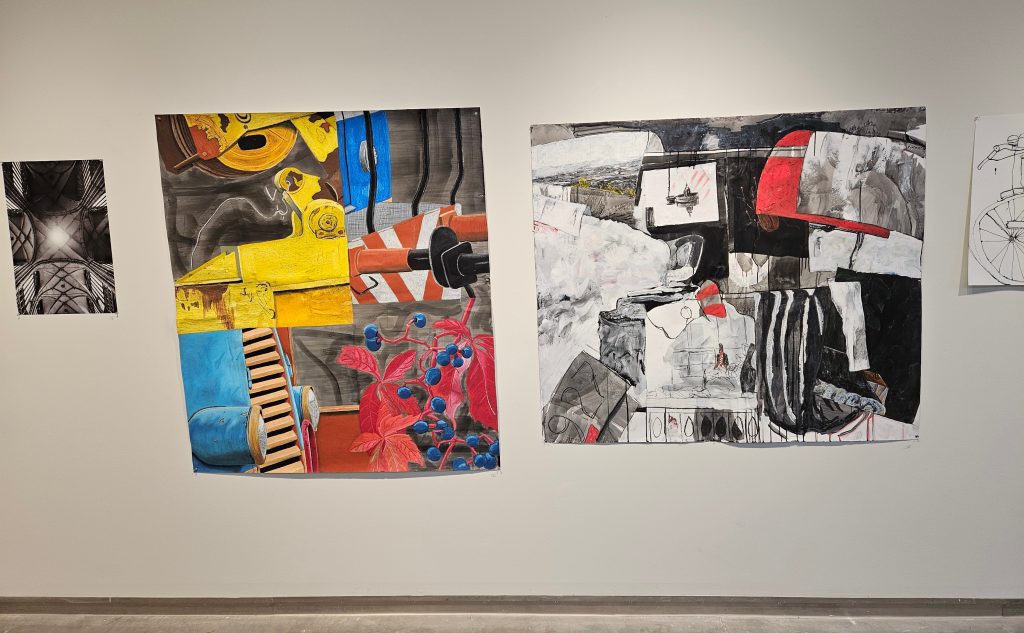
February 27 – March 30, 2024
Opening reception: Tuesday, February 27, 5:00 – 6:30 p.m.
Artist’s Gallery Talk: Tuesday, February 27, 5:30 p.m.
My process has employed a variety of images, forms, surfaces, methods, and materials to explore an imaginative space in which contrasts and contradictions coexist to encourage a multitude of associations. Available Providence brings together two generations of my work — pairing earlier sculptures with new mixed media works on drafting film — that emphasize intersections of the human-constructed environment and our conceptions of the natural world.
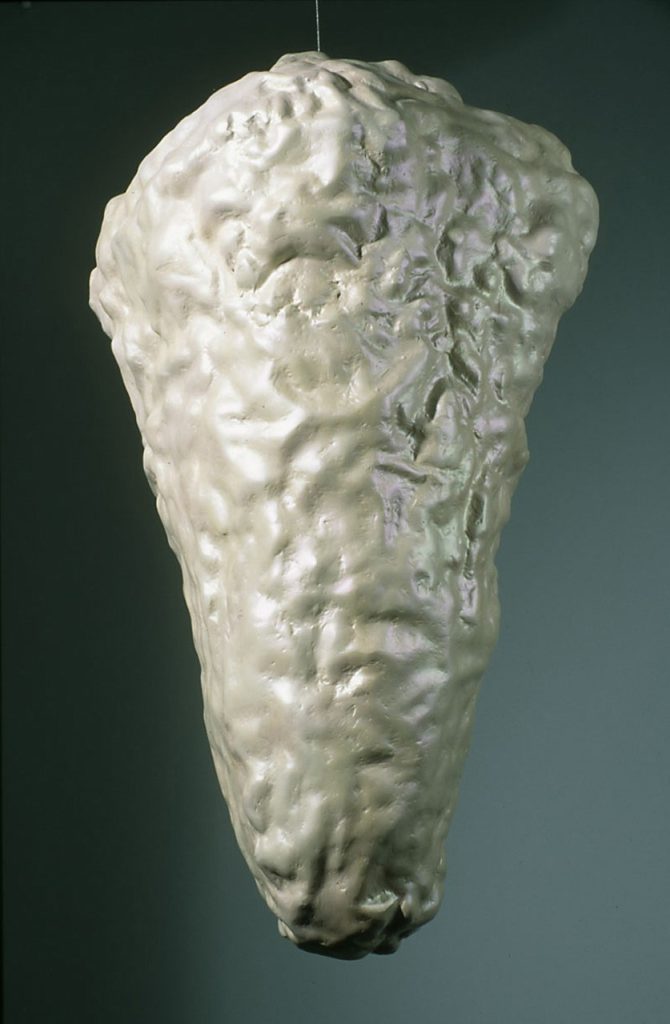
Pearl, 1998, Styrofoam, fiberglass, resin, acrylic interference paint, 52″ x 21″
In the mid-1990’s, with the support of my university and a residency in the ArtPace International Artist in Residence program, I was able to enlist fabricators to translate my drawn images into physical objects, designed to resemble manufactured or naturally occurring fodrms that suggest notions of containment and hidden or absent actions. Subsequently, I re-engaged with my original painting/drawing practice, arriving at its current incarnation in the Drift Threshold series. Here, painting, drawing, and collage are combined to exploit the translucent, two-sided substrate on which images related to transitory phenomena (such as aerial landscapes, clouds, and patterns in ocean foam and butterfly wings) are layered and “carved” into each other. These contingent and shifting perspectives inevitably become explicit and metaphorical references to our larger, shared concerns of partitioning, erosion, instability, water, and weather.
Pictured above: Drift Threshold (study 1), 2023, Acrylic paint, acrylic ink, colored pencil, leather on drafting film, 11.25″ x 9″
February 6 – 17, 2024
Opening reception: Tuesday, February 6, 5:00 – 6:30 p.m.
5:30 p.m.: Q+A with the Prague Abroad students
Public Reading of Creative Writing completed on the Fall 2023 Prague Abroad: Tuesday, February 13, 7:30 p.m. In the Schmidt Gallery.
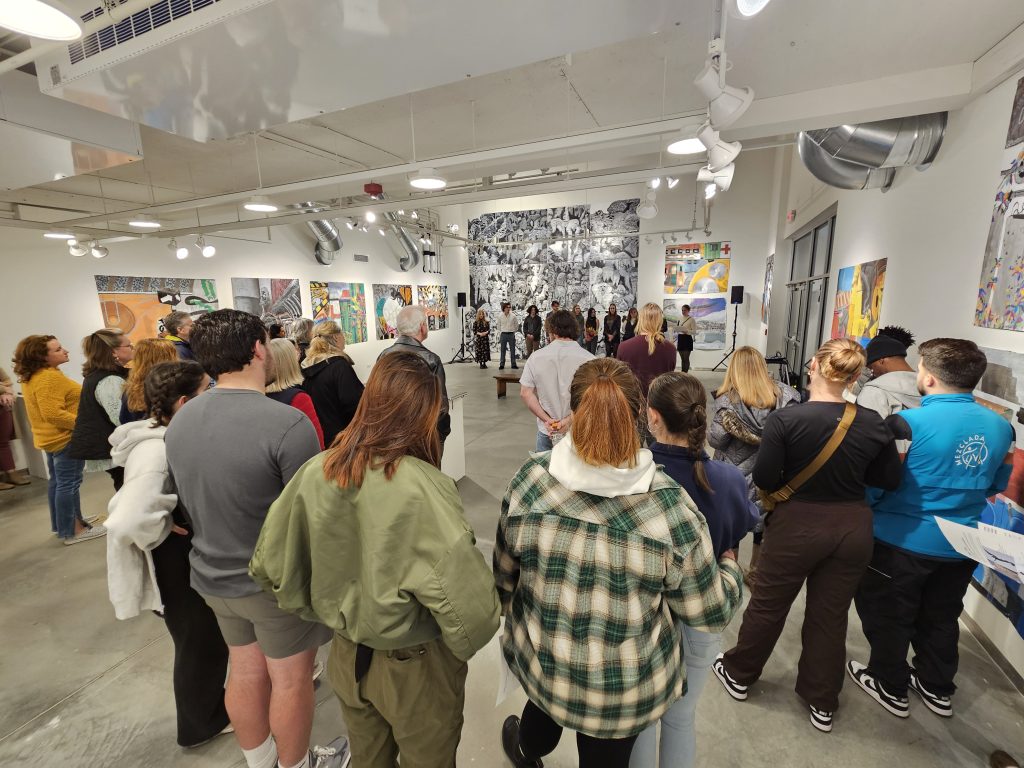
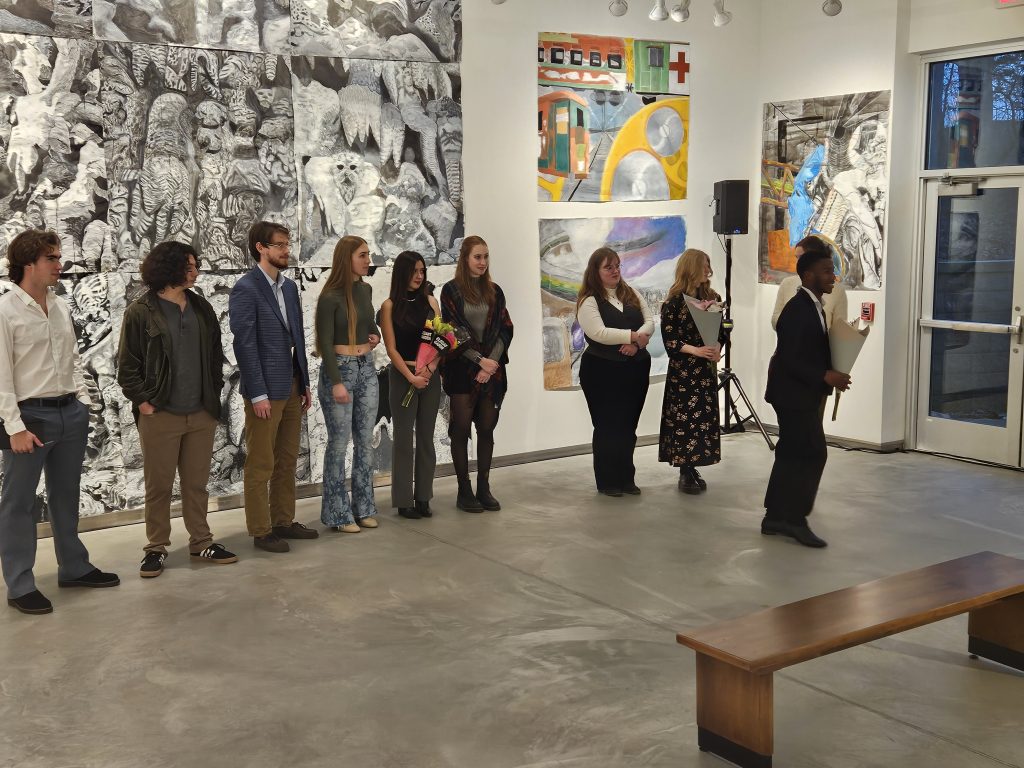
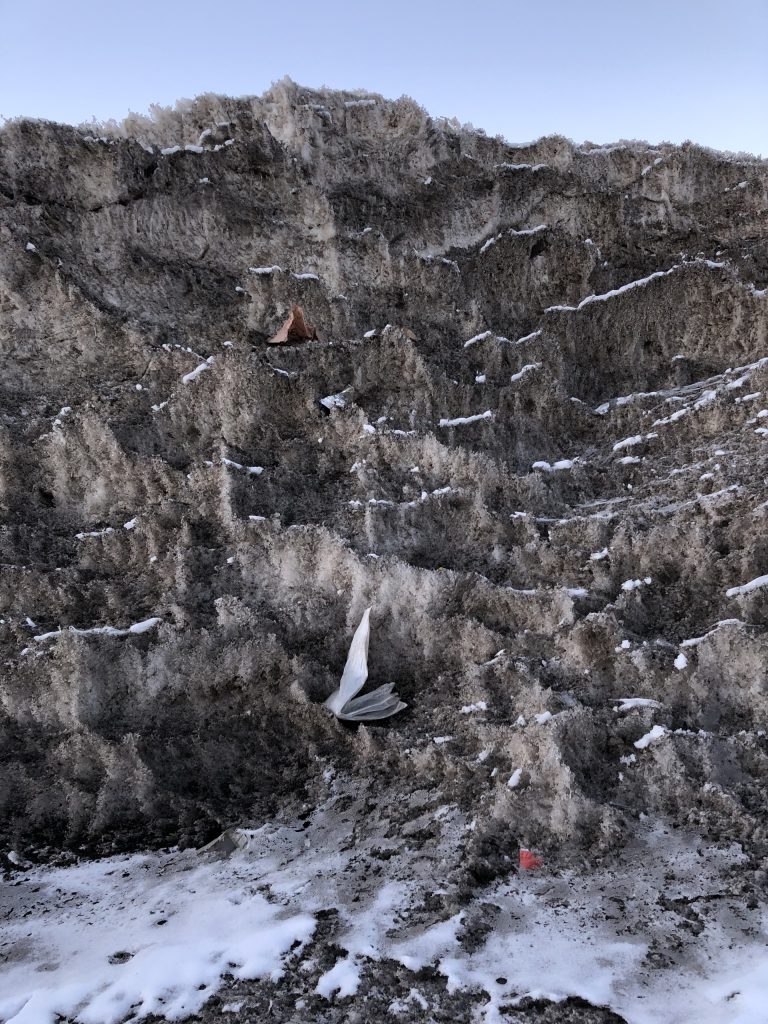
Artist’s Gallery Talk: Tuesday, January 23, 5:30 p.m.
Opening reception: Tuesday, January 23, 5:00 – 6:30 p.m.
October 31 – December 8, 2023
Windows 1, 2022, oil on canvas on panel, 30″ x 30″ (above)
Nancy Newman Rice was born in New York City and was educated at Cornell University (BFA with honors) and at Washington University (MFA). She has received awards that include a National Endowment for the Arts/MMA Fellowship for painting, Artist’s Residency Award at the Cité Internationale des Arts, Paris, France, and nominations for a Tiffany Award and an AVA Award in the Visual Arts. Newman Rice has exhibited her work internationally and has had solo exhibitions in both galleries and museums. Her work is included in public and private collections in the U.S. and abroad. Newman Rice has also written articles and reviews for national arts magazines including The New Art Examiner, American Craft, and The St. Louis Post Dispatch, as well as catalog essays for artists’ exhibitions. She took early retirement from Maryville University, St. Louis MO, where she taught painting for 34 years and was the director of Studio Art.
Website: www.nancynewmanrice.com
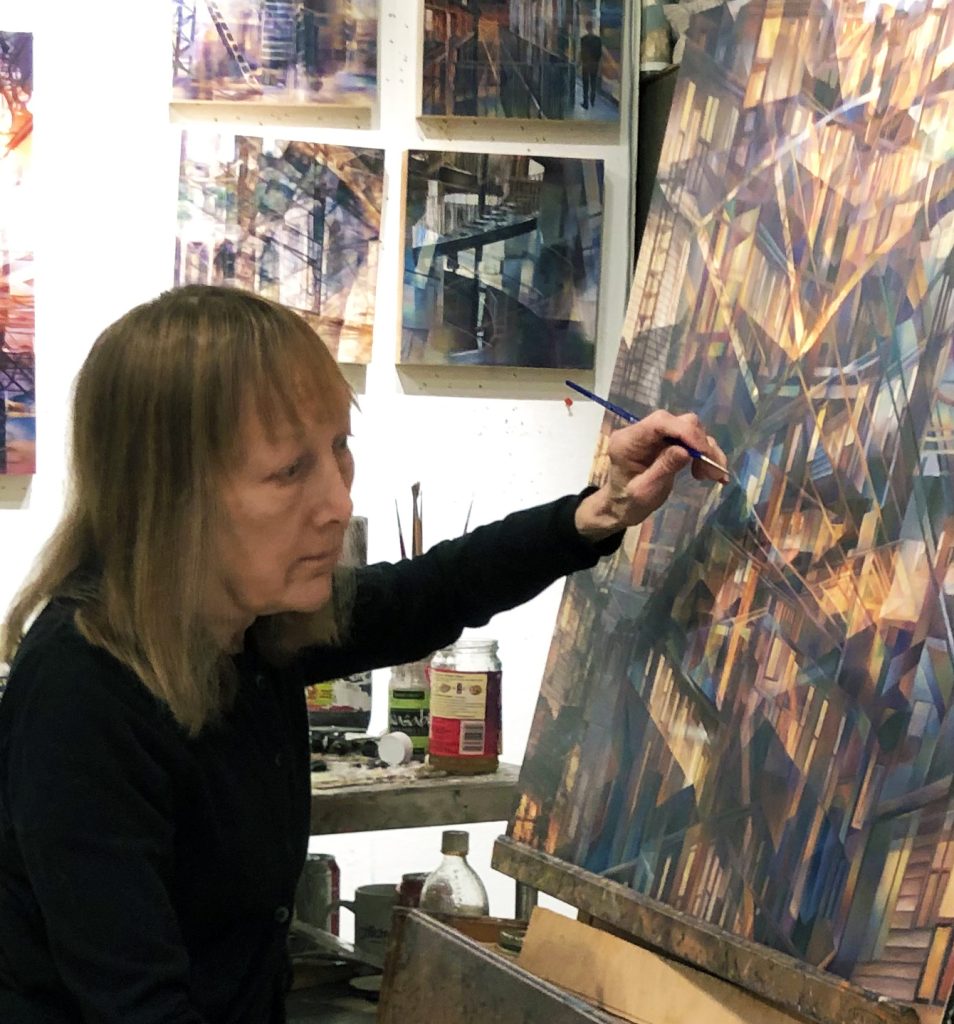
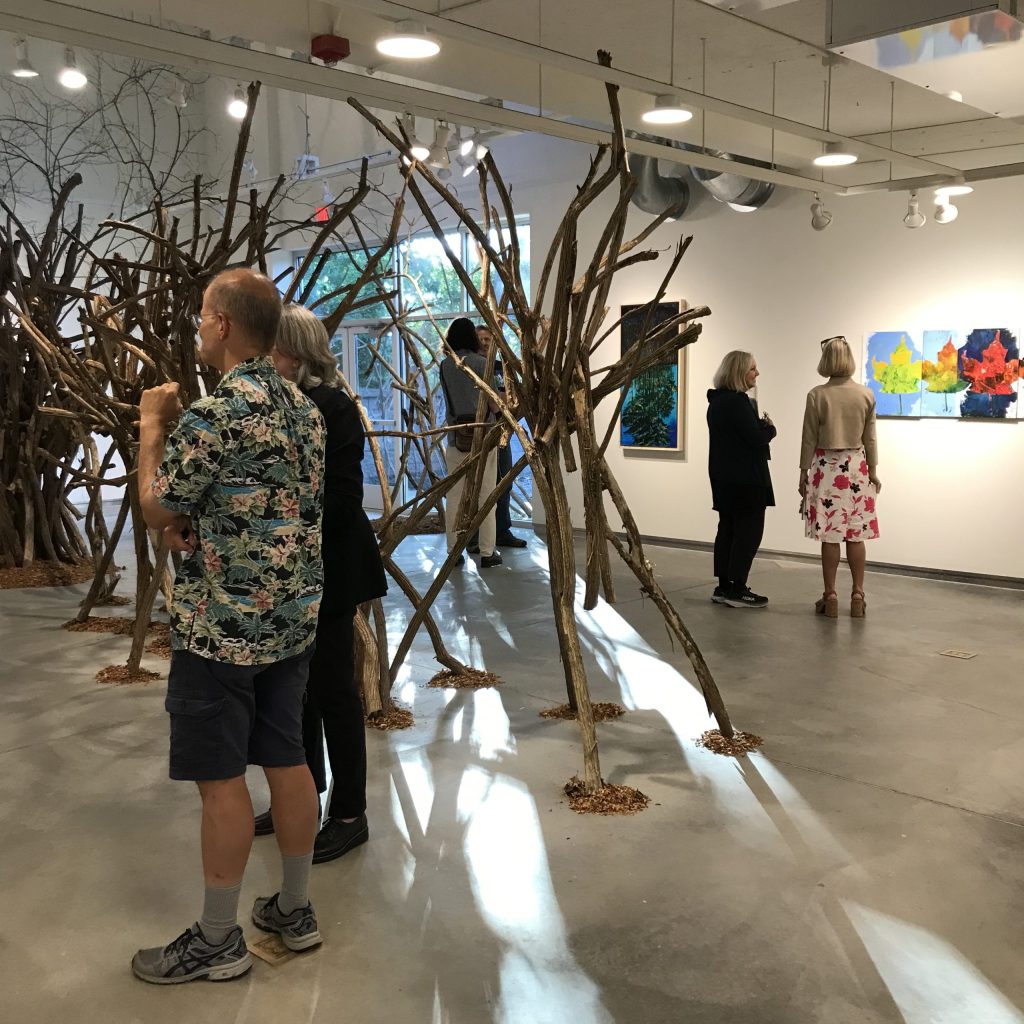
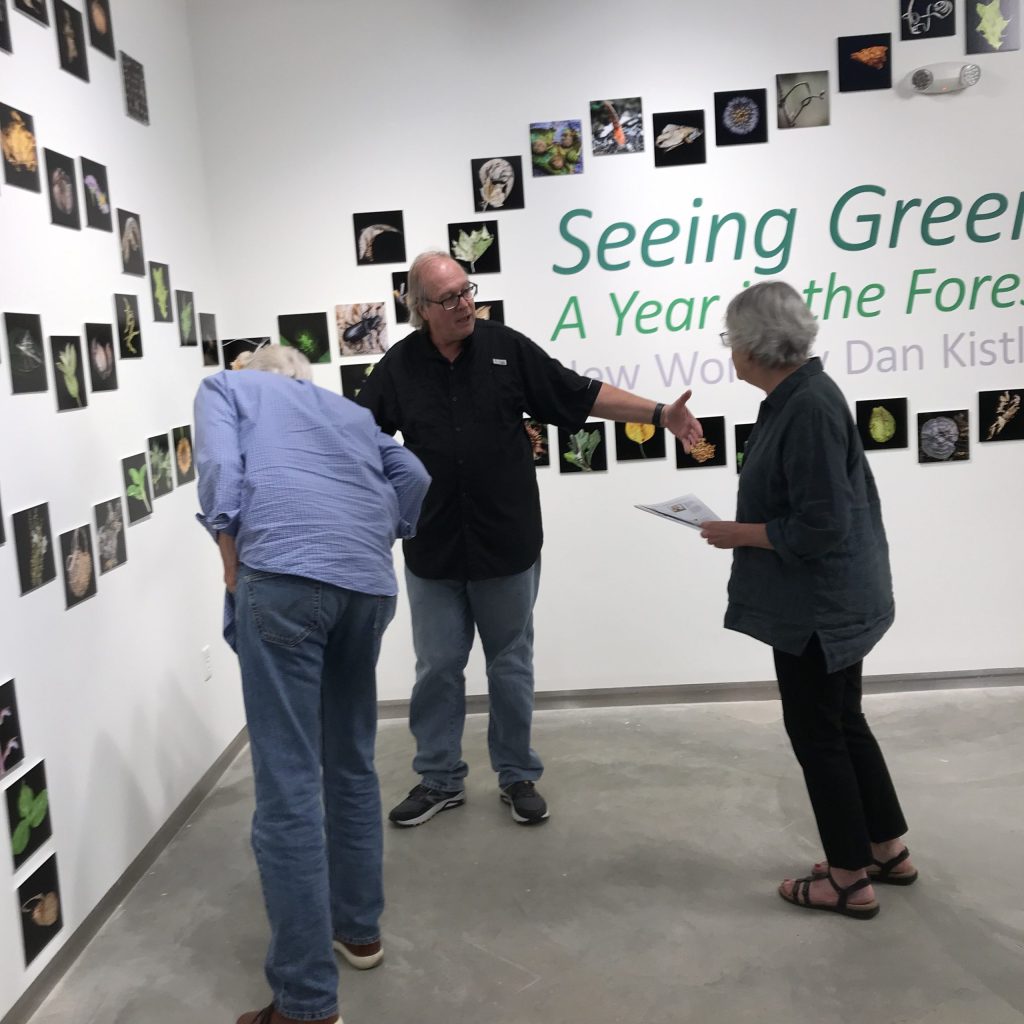

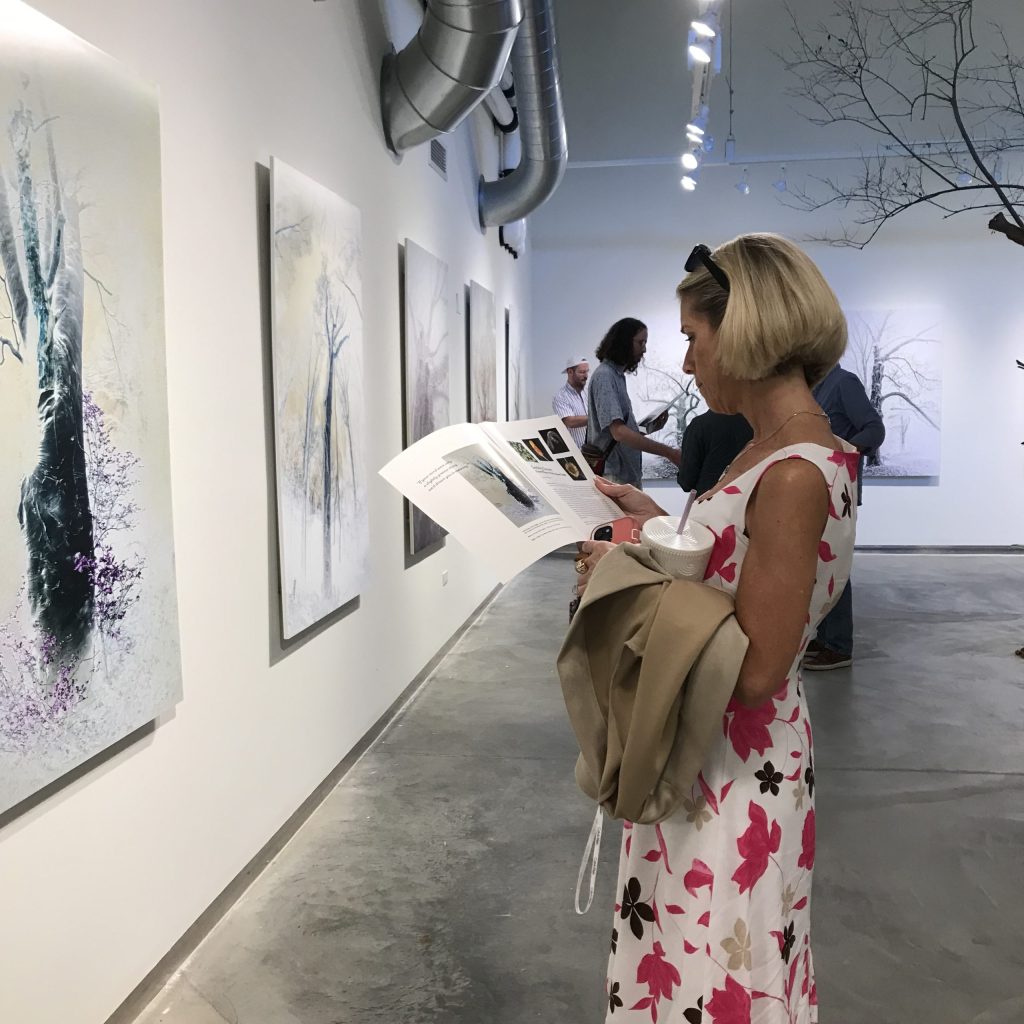
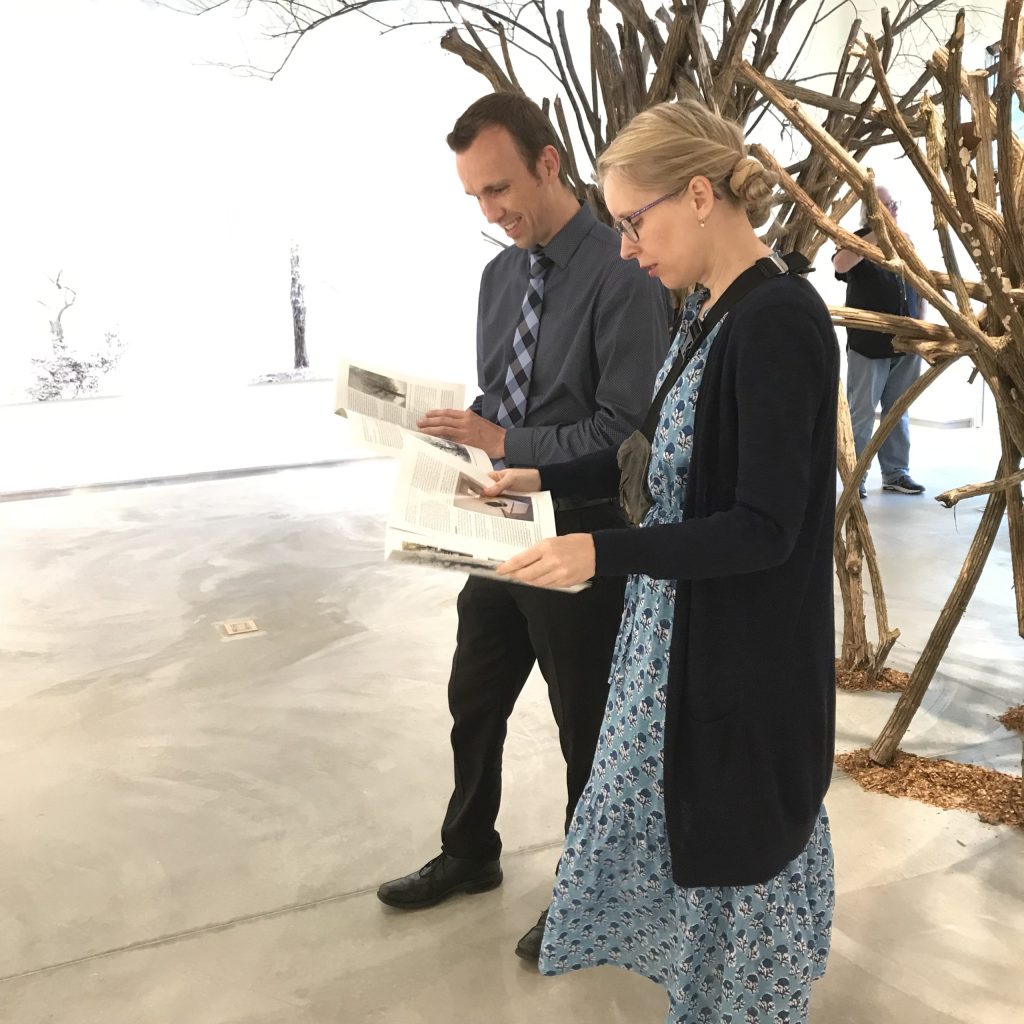
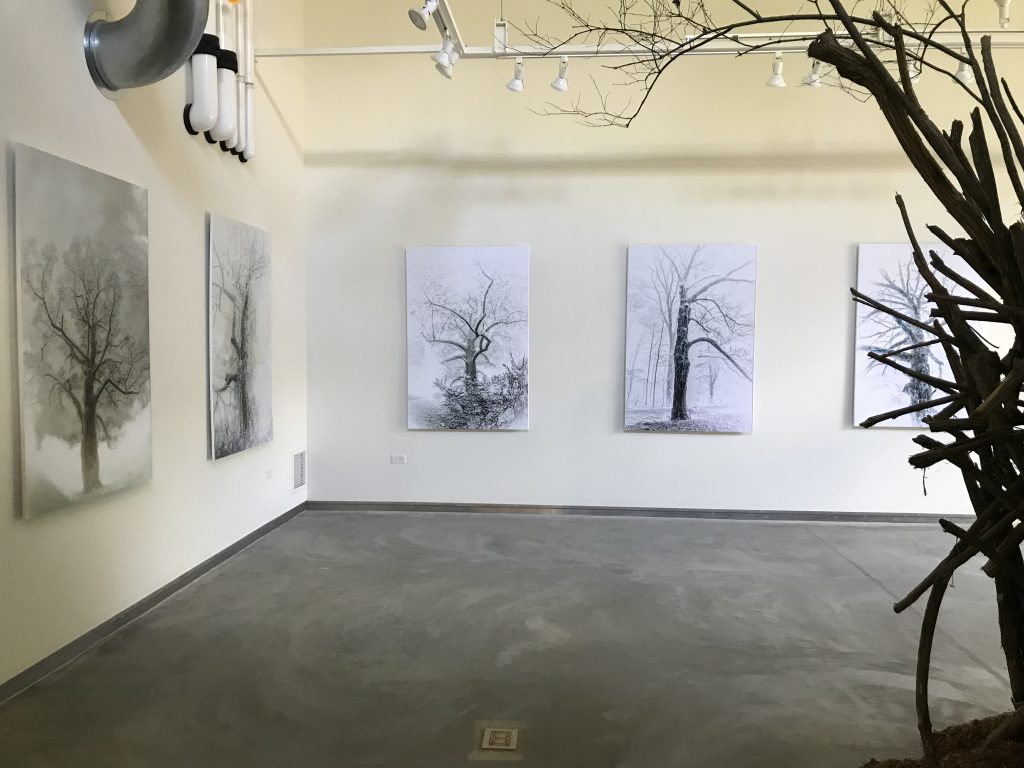
Opening reception: Tuesday, September 12, 5:00 – 6:30 p.m.
Special Homecoming reception: Friday, October 13, 5:00 – 6:30 p.m.
Dan Kistler is a visual media artist living and working in southern Illinois. His pathway in art includes an undergraduate degree in studio art from Principia College, two-years of classes at The Center for Creative Studies, a decade of work as an illustrator in the Detroit market, an MA in drawing from Webster University, and 27 years of teaching art at Principia College. Kistler’s current work is taking a number of directions. In photography he has stepped back into the darkroom and has fallen in love all over again with film photography—the grain, the anticipation, the unexpected results, and the touch it takes to get an image worth working with.
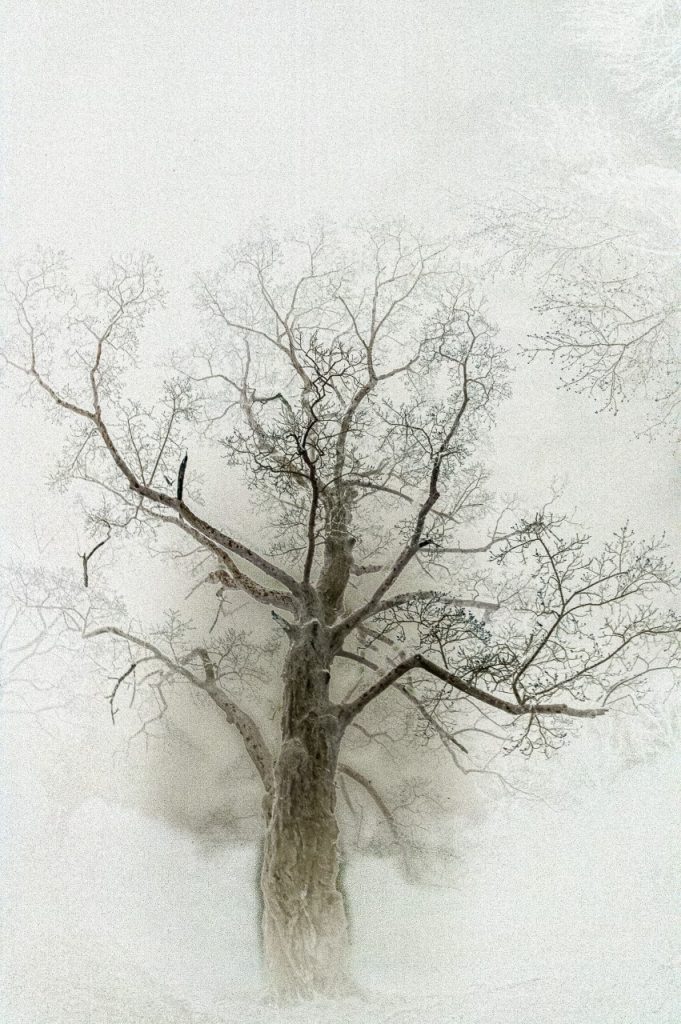
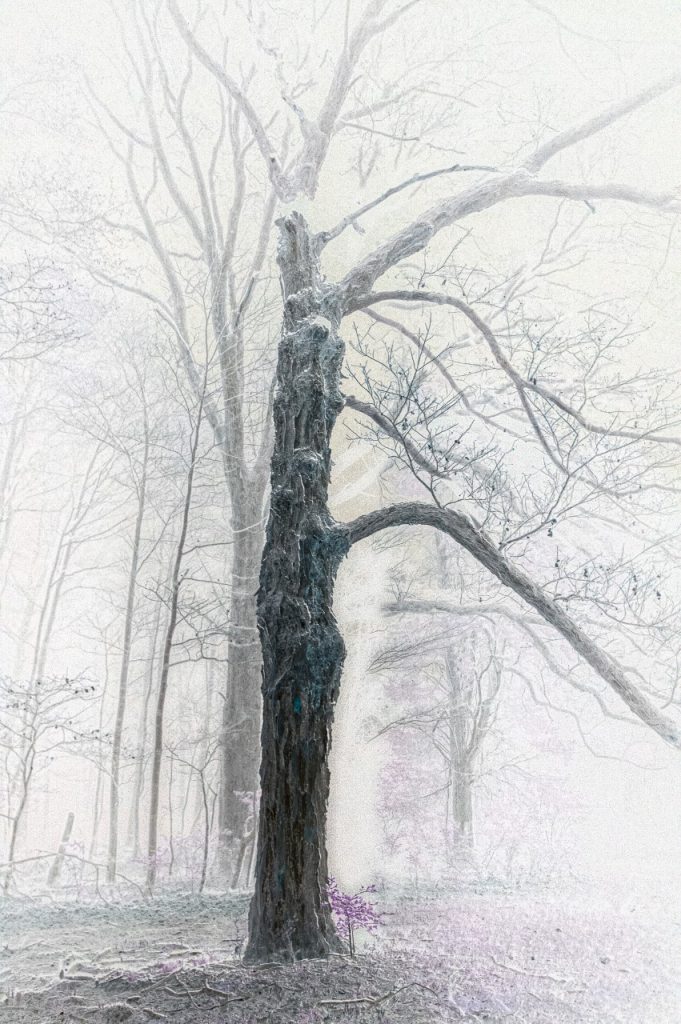
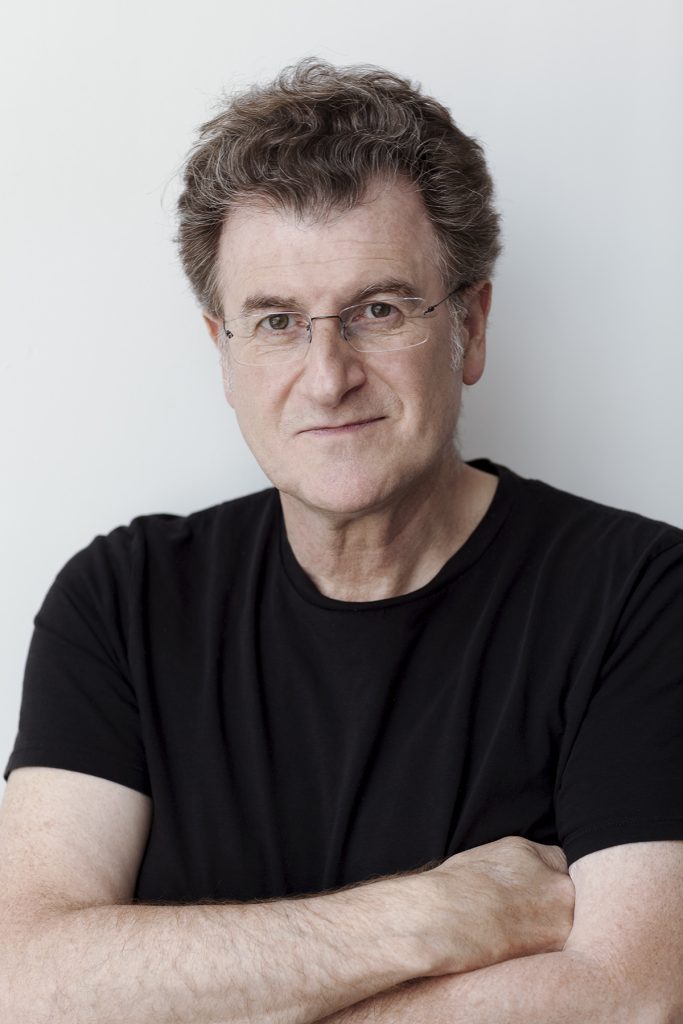
Internationally acclaimed artist, architect, and filmmaker Alfredo Jaar will present the inaugural lecture of a dynamic new lecture series at Principia College, the Schmidt Family Lecture Series in Contemporary Art. During the lecture, titled “It is difficult,” Jaar will discuss his art, ideas, and studio practice. The lecture will be on Tuesday, February 28, 2023, at 7:30 p.m. in Wannamaker Hall, on the Principia College campus (Elsah, Illinois). The lecture is free and open to the public.
Born in Santiago, Chile, in 1956, Alfredo Jaar has lived and worked in New York City since 1982. One of the most important artists in the contemporary international art world, Jaar is known for his uncompromising work as an artist and his integrity as a human being. He is expert at the act of paying attention to issues in the world, and through his innovative practices in a range of media—photography, film and video, sculpture, installation, and public interventions—Jaar brings the viewer’s attention to difficult, often tragic events such as genocide, displacement of refugees, various social and racial injustices, and the imbalances of power among nations and peoples.
Jaar’s public art and museum and gallery exhibitions intersect with many disciplines—among them history, philosophy, political science, sociology, biology, and the fine arts. His artwork can be thought of as interventions to insular thinking and disassociation, and as invitations to deeper understanding and empathy. He poetically protests indifference and public amnesia, and asks the viewer to contemplate and engage in ethical practices. The conceptual and aesthetic depth of Jaar’s art is a compassionate gesture to those who have suffered and are suffering in the world.
The artist has an extensive international exhibition record. He has participated in multiple Biennales of Venice, Sao Paulo, and Documenta (Kassel, Germany). Jaar has realized more than seventy public interventions around the world. Over sixty monographic publications have been published about his work. He became a Guggenheim Fellow in 1985 and a MacArthur Fellow in 2000. He received the Hiroshima Art Prize in 2018 and the Hasselblad Award in 2020.
Jaar’s work can be found in the collections of The Museum of Modern Art and Guggenheim Museum, New York; Art Institute of Chicago and Museum of Contemporary Art, Chicago; MOCA and LACMA, Los Angeles; MASP, Museu de Arte de São Paulo; TATE, London; Centre Georges Pompidou, Paris; Nationalgalerie, Berlin; Stedelijk Museum, Amsterdam; Centro Reina Sofia, Madrid; Moderna Museet, Stockholm; MAXXI and MACRO, Rome; Louisiana Museum of Modern Art, Humlaebeck; Hiroshima City Museum of Contemporary Art and Tokushima Modern Art Museum, Japan; M+, Hong Kong; and dozens of institutions and private collections worldwide. He is represented by Galerie Lelong in New York City.
This lecture was the inaugural lecture of the Schmidt Family Lecture Series in Contemporary Art.

Opening reception: Tuesday, February 21, 5:00 – 6:30 p.m.
Artist’s Panel Discussion: Tuesday, February 21, 7:30 p.m., Wanamaker Hall
Sheila Pepe is best known for crocheting her large-scale, ephemeral installations and sculpture made from domestic and industrial materials. However, the exhibition “Sheila Pepe: Hot Mess Formalism,” curated by Gilbert Vicario for the Phoenix Museum of Art, and the catalogue published with it, demonstrated that Pepe has built a more expansive and complex way of working since her start in the mid-1980s.
For more than 30 years she has accumulated a family resemblance (see Wittgenstein, Philosophical Investigations) of works in sculpture—installation—drawing and other singular and hybrid forms. Some are drawings that are sculpture—or sculpture that is furniture, fiber works that appear as paintings, and table top objects that look like models for monuments, and stand as votives for a secular religion. The cultural sources and the meanings twisted together are from canonical arts of the 20th century, home crafts, lesbian, queer and feminist aesthetics, 2nd Vatican Council American design, an array of Roman Catholic sources as well as their ancient precedents.
The constant conceptual pursuit of Pepe’s research, making, teaching and writing has been to contest received knowledge, opinions and taste.
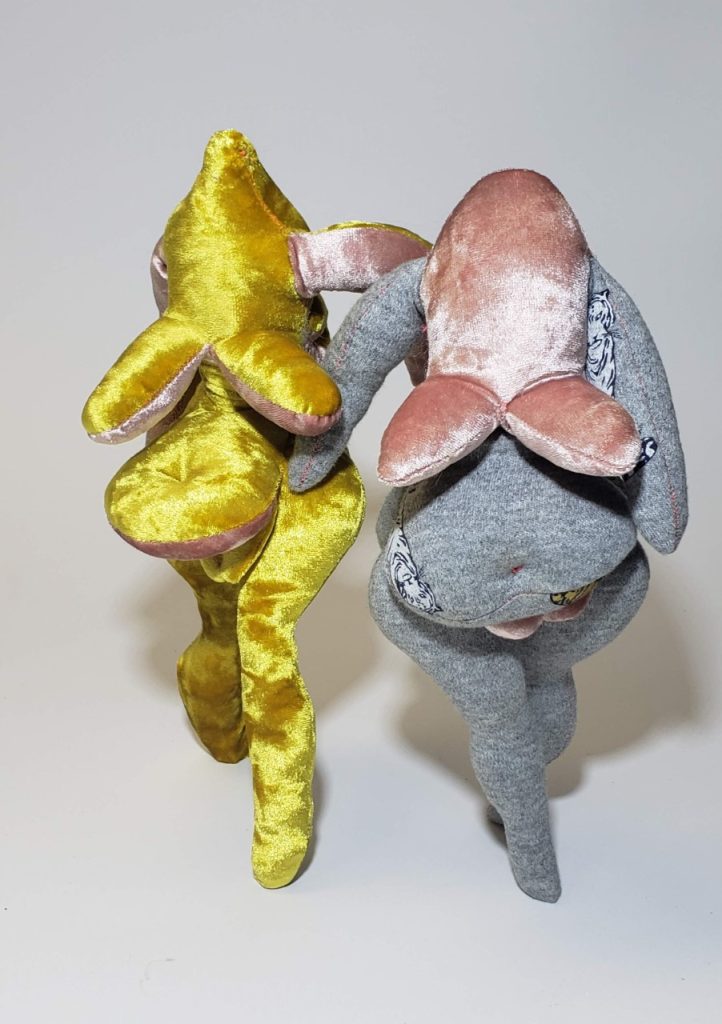
Heidi Blunt is a 2021 Master of Fine Arts graduate from The Vermont College of Fine Arts, Visual Arts program. She lives and works along the shores of Lake Superior in Superior, WI and is an instructor at The College of St. Scholastica in Duluth, MN.
Blunt’s goal as an artist is to encourage a celebratory embrace of fat bodies as imperfectly perfect. Contrary to the vast and intricate systems that shame and demonize fat bodies, she feels it is imperative to point out that having a fat body is neither a moral deficiency nor intellectual failing. She unapologetically represents the body as positive and as a space for inquisitive exploration of the body’s intrinsic contribution to the building of self-identity – a crucial step in the process of self-embodiment. While investigating questions that she has about her own embodiment, Blunt’s work holds space for viewers to question and experiment with theirs. These investigations often take the form of participatory opportunities in which she incorporates the aesthetic tools of camp, humor, kitsch, play, and an uplifting color palette to encourage celebration of the fat body.

Élan Cadiz is an interdisciplinary North American Visual Artist that deconstructs and balances her intersectionality through her projects. Her art and practice are grounded in the documentation of her personal narrative through the use of historical imagery and the domestic.
Cadiz’s art speaks to the promise in each individual and the struggle to overcome the barriers that prevent them from realizing their true, boundless potential. Her goal is to have viewers question their condition(s) in ways that bring about positive change in their lives and the lives of others. Cadiz attended Fashion Institute of Technology for two years after high school and continued and completed her undergraduate degree at City College of New York with a BA in Studio Art. Elan received a MFA Fine Arts degree from the School of Visual Arts where she was awarded the SVA Merit Scholarship, Paul Rhodes Memorial Award, and the Martha Trevor Award. She has been commissioned by the Studio Museum in Harlem, El Museo de Barrio, Art in Flux Harlem, Mount Vernon Hotel Museum and more. Cadiz was one of the first Sustainable Arts Foundation AIRspace Parent Artist Residence at Abrons Art Center; and, her An American
Family Album series was featured in VOGUE. Her artworks can also be found in New American Paintings magazine, issue #146, juried by Jerry Saltz and issue #153 juried by curator Lauren Haynes.
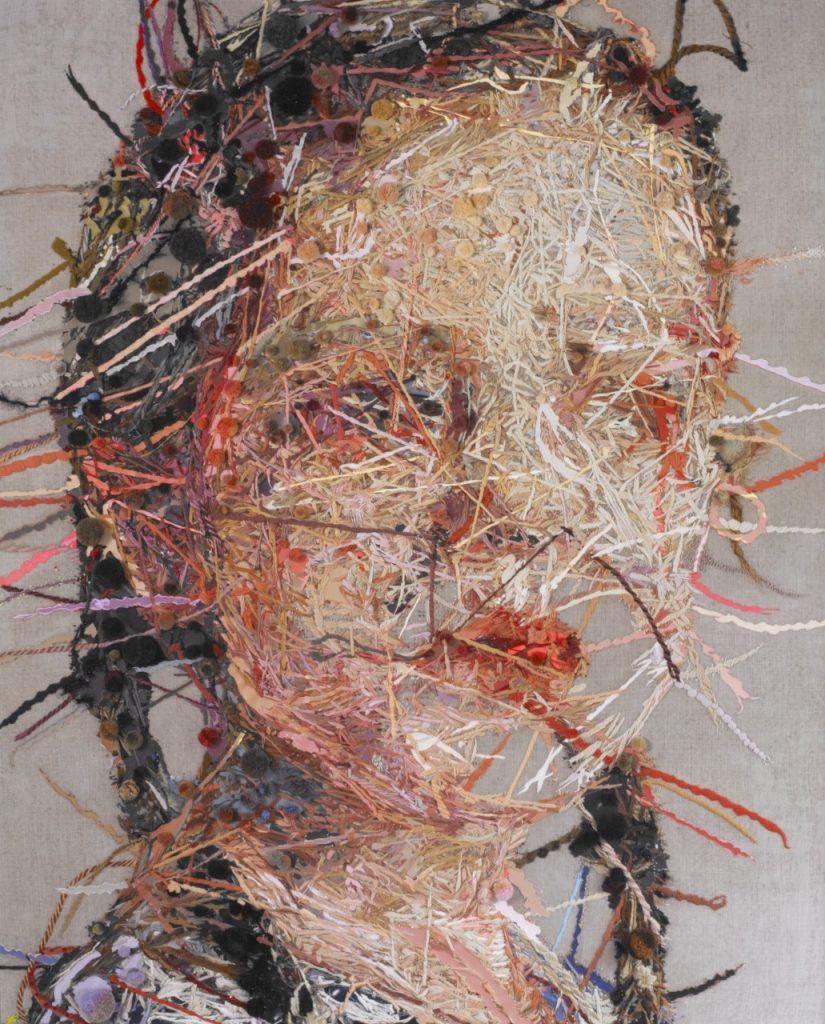
Cayce Zavaglia earned her Bachelor of Fine Arts from Wheaton College in 1994 and her Master of Fine Arts in Painting from Washington University in 1998. In 2001, she began incorporating wool and cotton thread into her practice and embarked on a series of hand-embroidered portraits of family and friends. Her unique sewing technique has allowed her to blend colors and establish tonalities that resemble the techniques used in classical oil painting. Her stitching methodology borders on the obsessive, but it ultimately has allowed her to visually evoke painterly renditions of flesh, hair, and cloth.
A few years ago, she began highlighting the reverse side of her embroideries in a series of gouache, acrylic, and mixed media “Verso” portraits. Historically, in embroidery, this side is always hidden from view. Zavaglia’s work challenges traditional embroidery etiquette and the place of “craft” in art by allowing the viewer to see the loose ends, knots, and the movements of the maker on the back of each portrait. In doing so, she has initiated a conversation about the divergence between our presented and private selves. The production of both Recto and Verso portraits is now the primary focus of her studio work.
In 2014, Zavaglia was selected for the Great Rivers Biennial, and she mounted her first solo museum solo exhibition entitled Recto/Verso at the Contemporary Art Museum St. Louis. That same year, she was also awarded the prestigious Regional Arts Commission Artist Fellowship, which allowed her to embark on a research trip to Australia to document childhood friends for future works and exhibitions. Zavaglia has had solo exhibitions in Miami, Chicago, St. Louis, and New York City. Her works are included in the permanent collections of the 21c Museum and the University of Maine’s Zillman Museum of Art, the West Collection, The Ria and Lex Daniels Collection in the Hague, and numerous private collections across the United States. Zavaglia has been living and working in St.Louis since graduation and is represented by William Shearburn Gallery in St. Louis.
Graham Littell is currently working as a Post-Graduate Teaching Intern for the Department of Art + Art History at Principia College. In May of 2020, he graduated from Principia with a BA in Studio Art with a focus in Drawing. On top of assisting with classes and installing exhibitions in the Schmidt Gallery, he is actively producing a body of work for his solo exhibition: Overstimulated, still which will consist of his paintings and digital photography in late January of 2023. Following his time as PGTI, Littell intends to pursue an MFA in Studio Art.
Opening reception: Tuesday, January 24, 5:00 – 6:30 p.m.